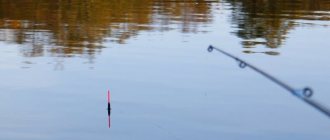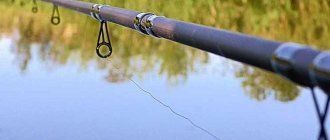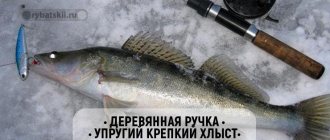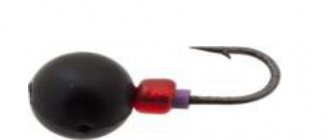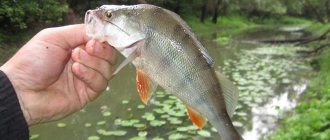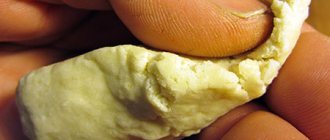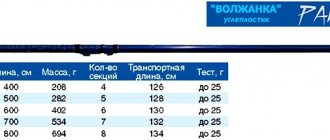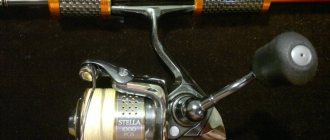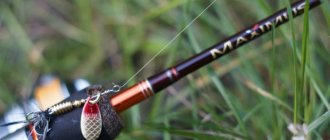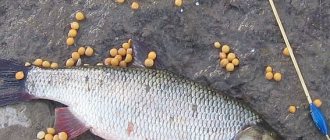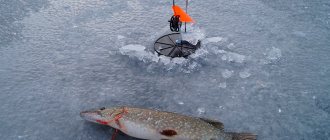The desire of an angler to catch large trophies, carp or grass carp is not surprising, because it is quite difficult to do this. But it will be no less interesting to learn how to catch roach with a float rod , After all, this type of fishing is very popular.
Roach also belongs to the carp family and this fish is found in all freshwater bodies of our country. And, despite the fact that large individuals reach a weight of up to a kilogram, catching them with float tackle gives a lot of unforgettable emotions and impressions.
Equipment
Float tackle for roach is selected depending on the season and fishing conditions. The type of reservoir and fishing characteristics also have a great influence. In general, the tackle consists of:
- fishing rods;
- coils;
- main line;
- float;
- leash with hook and sinkers.
Rod
Rods are selected depending on:
- fishing conditions;
- casting range of equipment;
- nozzles used;
- natural conditions, the presence of wind and current in the reservoir.
Fly feathers
A rig with a fly rod is used when fishing on the near edge, and the distance is no more than 1.7 times the length of the rod, that is, if the length of the blank is 6 meters, then fishing is limited to 10 meters.
With a fly blank, a blind rig is used, when the main line is attached to the tip of the rod using a special connector and the reel is not used. The rod is transported folded, and the equipment is stored wound on the reel.
Before you start fishing , the form is assembled, the equipment is attached to its tip, the nozzle is put on the hook and the cast is made with a swing. Fly rods have a length from 5 to 13 meters, and it is selected depending on the distance to the fishing point.
The advantages of fishing with fly blanks are high casting accuracy, but when fishing, they do not allow you to absorb the jerks of the fish, and a large specimen can break off the delicate float tackle.
Bolognese
Bolognese fishing rods consist of several legs (3-6), inserted into each other like a telescope. This gives advantages, because during transportation the length of the rod when folded is 20-25% of its actual length when disassembled.
Bolognese forms are equipped with a large number of rings on high legs, evenly spaced throughout the form. The rings help to accurately cast the equipment and at the same time, thanks to them, when fishing for a trophy, the load is evenly distributed throughout the entire rod.
This prevents the risk of the form breaking even under heavy loads. Bolognese fishing rods are equipped with a stationary screw or folding reel seat. With the help of such a holder, the reel is quickly mounted on the fishing rod, the fishing line is passed through the rings and leashes are tied to it.
Bolognese blanks are not used for long-distance fishing, but they are very convenient when fishing for roach in the current. Bolognese tackle is used with a float, which is rigidly fixed to the main fishing line.
Match
A match rod is in many ways similar to a Bolognese rod, but it has a stiffer action, larger guides and a reinforced handle. This form is effective when fishing at long distances, and experienced fishermen are able to accurately cast tackle over a distance of up to 50 meters. When fishing for a match, special sliding floats are used, which allow you to make long casts without the risk of tangling the equipment.
Coil
When fishing with a fly or plug, reels are not used, because due to the design features of the forms, they are not necessary. A Bolognese or match fishing rod is equipped with a spinning reel with a spool with a diameter of 2000-3500. Since the maximum fishing distance does not exceed 50 meters, there is simply no need for a larger diameter spool.
The gear ratio of the reel is also not so important, because the line is reeled in over a short distance and special speed is not needed. It is important that the reel, when winding, evenly lays out the turns of the fishing line and that a “beard” does not appear when casting. When fishing with match gear, choose reels with a friction brake, which comes in handy when a large trophy tries to break off the delicate gear.
fishing line
Since roach is a medium-sized but very cautious fish, small-diameter monofilament lines (0.16-0.18 mm) should be used as a base for float equipment. The main line for roach with a diameter of less than 0.16 is still unreliable, and there is simply no need for a base thicker than 0.18.
In order not to spook the cautious fish, the main line of the float tackle should be quickly sinking, and the color should be closer to transparent and certainly not bright red or orange, as carp anglers choose.
It is especially important to properly rig your fishing rod and use clear main line in the spring and fall, when the fish are especially wary. Braided lines are not used when fishing for roach with a float because they are clearly visible in the water and can scare away cautious roach from the bait on the hook.
Hooks
Roach is a small fish and is caught using small animal or plant baits. The main condition that a roach hook must meet is that the bait sits securely on it and completely hides the sting. If, when fishing for carp or grass carp, the tip of the hook is left open, then the bait on the roach should completely close it. Therefore, float equipment for roach is knitted with small hooks, size 16-22, according to the European classification.
Floats
Since the float is a bite indicator, it should be clearly visible to the angler. Moreover, not only the float itself should be clearly visible, but also possible changes in its position when a roach bites. It may seem that the larger and brighter the float for roach, the better and more convenient it is for the fisherman, but this is not entirely true. When fishing at shallow depths, a large and bright float can be noticeable to the fish and alert it.
Therefore, a float for roach is selected depending on:
- fishing distances;
- immersion depth of equipment;
- weather conditions under which fishing is carried out;
- the type of fishing rod used;
- time of day (in the morning a bright float is better visible, and in the afternoon, when the sun is shining, it is dark in color);
- weight of the weight used in the rig.
When fishing with fly tackle, which effortlessly “places” the equipment exactly at a given point, choose light elongated floats with antennas painted in bright shades. Such floats are rigidly attached to the main line using rubber bands, they are very sensitive, and you can clearly see how the fish behaves and whether it has taken the bait.
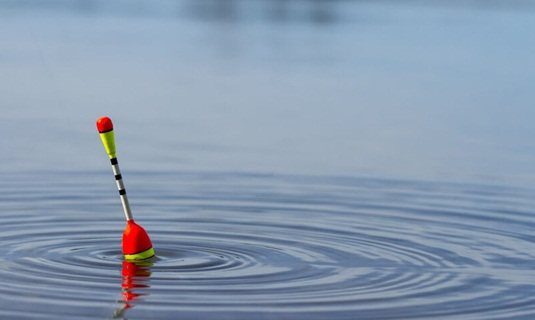
Fishing with a match rod involves the use of bright floats with a high antenna and a long keel, which ensures stability even in strong winds. Match floats are equipped with small guide rings, which allows them to be used in sliding equipment.
The shape of the float affects its behavior in water, so barrel-shaped products with a high carrying capacity are used for fishing in the current, and oblong ones are used when fishing on lakes with still water.
Installation of equipment
It is convenient to fish with a fly rod, having various equipment options in stock. When choosing it, you need to take into account various factors.
Among them:
- The type of fish you are going to catch this time.
- The depth of the reservoir where you are going fishing.
- The presence of a current and its strength.
- Relief and features of the bottom.
- There may be other factors that can affect the size of the catch.
It will be convenient if you prepare several different gear options at home. Why can't you get by with just one of them?
- Sometimes you can decide in advance on a specific type of gear that will suit you best. But this doesn't always happen. It is more convenient to have several different options with you to choose from, from which you can choose already at the fishing spot.
- Another important reason that it is better to prepare gear in advance is that sometimes you can finally decide on the spot. To do this, you need to have plenty to choose from.
- Another important point is that the tackle, no matter how catchy it is, can simply break due to too active fish on the hook or getting caught on the bottom. It is important that at this moment there is a suitable backup option at hand.
Here we will talk about one of the options for installing equipment. As an example, we will look at one of the most typical options.
First, we note that it is customary to store prepared equipment in assembled, mounted form, wound on a reel. They take them with them on fishing trips in this form.
- The rod can be chosen in different lengths. One of the most common options is to take one that will be approximately five to six meters long.
- It is believed that the length of the fishing line should be approximately equal to the length of the rod. Some fishermen take its length to be thirty centimeters longer. A small loop should be made at the end that is supposed to be attached to the fishing rod. One option for this would be to use a figure eight knot.
- Now you need to attach the fishing line to the rod. Nowadays it is convenient to do this using a connector. It looks like this:
- First, the connector must be attached to the tip of the rod. One way is as follows. It is put on the thin tip of the rod, having previously lubricated the joint with superglue. When the glue sets and dries, the connector is ready. Now you need to pass the loop on the tip of the fishing line under the hook of the connector and then close it (picture on the right). After this, the connection will be quite reliable. This connection will need to be made when attaching ready-made tackle to the fishing rod. Since we are still installing the gear, it is better to disconnect the rod for now.
- Now let's start installing the float. To do this, take a float, which has a loop on the side of the body and two stoppers for fastening. First, we put on the upper stopper of the float from the end of the fishing line and move it to the desired place. Then we put on the float connector (it is a swivel with a latch at one end). After this, install the lower float stopper. You will now need to attach a float to the connector.
- We tie a swivel to the end of the main line. One of the most common knots for this is the clinch. It is fashionable to take a leash 12 - 20 centimeters long. We tie a hook on one side and make a small loop on the other. To tie to the swivel, we use the “loop to loop” method.
- Now let's remember that we need a sinker. On modern floats, as a rule, the weight is indicated. This is exactly the weight at which the float will work as it should. Let's assume we are talking about two grams. For this purpose it is convenient to use special fishing pellets. They differ from ordinary ones in that they have a cut that allows them to be put on the side of the fishing line and in that their weight is precisely measured. Let's say the pellet weighs half a gram. We will need four of them. Having put them on the fishing line, they need to be lightly pressed down with pliers. If this is done too forcefully, the pellets can damage the line. The pellets are placed in front of the swivel, which ends the main part of the fishing line.
- That's it, the equipment is ready. They wind it on a reel and in this form they take it with them fishing.
Equipment for fishing on the current
When fishing for roach in the current, frequent recasting of the tackle is required, and doing this with a heavy rod is quite difficult and tiring. Therefore, fly and plug tackle for the current are inconvenient, and anglers use a Bolognese or match rod.
But the match is also intended for long-distance fishing, and the current will quickly carry away the float and the equipment will have to be rethrown.
Therefore, the optimal choice for catching roach in the current is:
- Bolognese rod;
- spinning reel with spool 2000-2500;
- main line with a diameter of 0.18mm;
- barrel float 8-10 g, with a high antenna of bright color and a long keel;
- leash with hook number 14-16 in Europe.
When fishing on a current in windy weather, accurate and long casts become significantly more difficult, so you need to use stable floats with high buoyancy and heavy loads. An important role is played by the correct loading of the float and the length of the leash, because after immersion in water it must take a working position as quickly as possible.
Equipment elements
There are not many of these elements, but each of them will affect the future success of your fishing.
Connector
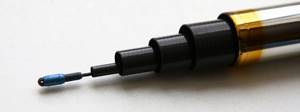
This part is designed to attach the main line to the fishing rod. In modern fishing, this part is usually bought, rather than made independently. It looks like a carabiner into which the loop of the main line is hooked. A detailed drawing of a typical connector is provided later in this article.
fishing line
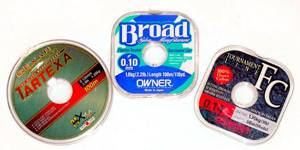
The main line should be thicker than the leader. Its length is usually equal to the length of the rod or several tens of centimeters more. The specific thickness is selected depending on the type of fish, the length of the rod and other factors.
Float selection

They can be spherical or elongated. Of course, intermediate forms are also possible. There is also a keel, which provides the float with a fixed position, and a flag necessary to signal a bite.
Sinkers

They are used in several ways. Along with the usual sinker, one or more can be used. They are usually located below it to the end of the main line. A heavier fishing line increases the fisherman's chances when fishing in strong currents.
Leash with hook
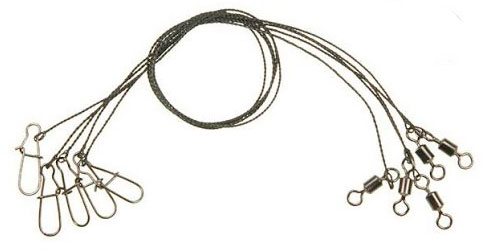
It is usually pre-tied and attached to a swivel at the end of the main line. The thickness of the leader is slightly less than that of the main line.
Equipment for fishing in still water
All four types of float forms are suitable for fishing in still water, and the choice depends only on the distance of the baited fishing point. Match rods are used for fishing at long distances, and fly rods, plug and Bolognese, are used on the near edge. The weight of the float also depends on the casting distance, but it is still advisable to use the lightest of them, because they respond to the lightest bites from the track.
In the current, the equipment moves quite quickly and the fish bites more confidently, because it simply does not have time to carefully examine the bait and suspect something. In reservoirs with stagnant water, especially large roaches behave warily and to catch them, you need delicate and light tackle. To assemble a fishing rod for still water you will need:
- Bolognese rod 4-5 meters long;
- spinning reel with 2000 spool;
- main line 0.16;
- float 5 grams;
- hooks number 16-18.
Float tackle for roach
To install float gear on roach in still water you will need:
- float stops;
- leash with a hook 10–12 cm long;
- float with one attachment point on a swivel with a clasp;
- shot weights;
- swivel acting as a shepherd.
Installation of the float rod equipment on the roach is tied directly on the main fishing line:
- put a stopper on the fishing line and pull it up;
- put on the float swivel;
- put on another float stopper;
- We tie a swivel to the end of the fishing line with a Palomar knot;
- tie a leash to the swivel;
- At a distance of 20-30 cm from the lower swivel, we attach 3-4 pellets, acting as the main load.
While on the pond, the fisherman adjusts the depth of the float with the help of stoppers. It is necessary that only the float antenna remains on the surface of the water, then even gentle bites of small roach will be visible.
The distance between the swivel and the load should be greater than the length of the leash. If while fishing, due to inactive biting, the leash lengthens, this rule must be followed, otherwise the tackle will get tangled when casting. The weight of the load must correspond to the carrying capacity of the float and sink it to the antenna.
This rig is used with fly and plug rods, as well as with a Bolognese fishing rod, when fishing at close range. It won’t be possible to use it during currents because the weights or swivel will drag along the bottom and it will be difficult to see the bite.
Fishing places
Experienced fishermen know that success in roach fishing depends 60-70% on the right choice of place. Beginners choose places on the shore that are more comfortable for relaxation, but it is not a fact that there is fish there. The main criterion for choosing a place to catch roach using float tackle is the availability of food supply.
Therefore, promising places are border areas of aquatic vegetation, thickets of reeds and islands of water lilies. Much also depends on the temperature of the water, because in cold weather the fish come out to bask in the sun in shallow water and by feeding the point, you can achieve a decent catch.
Fishing with a fly rod
- VK
A fly rod is a very effective method of fishing on any body of water. It allows you to present the bait to the fish on sensitive equipment accurately and accurately, and the fishing itself is interesting, productive and quite simple. Most often, such conditions occur in reservoirs and lakes, the species composition of fish and fishing in which have much in common.
FLY ROD FISHING IN RESERVOIRS
As with any fishing, one of the main tasks when fishing with a fly rod is choosing a catchable place. The task is simplified if there is preliminary information from the reservoir from fellow fishermen, which, of course, should be treated with a certain degree of criticism, especially if it is received from local fishermen. Usually they fish not in places interesting for fish, but where it is more convenient for them or closer to home. Often this tactic is justified, since the fish are suitable even for an unpromising, but constantly fed place. Of course, the most valuable is your own experience gained through the use of individual fishing techniques and specific bait.
But there are often situations when you have to choose a place on an unfamiliar body of water, then you can only rely on your experience and observation skills. In such cases, it is worth carefully examining the topography of the shore. When hunting for more or less decent specimens, you have to look for deep places. The steeper the slope approaches the water, the greater the depth you can expect near the shore. If the slope is cut by a stream or ravine, it means that in this place there is a discharge of soil into the reservoir; here a bank is formed with two slopes on the sides. Such a place is also interesting because the stream brings out additional food for the fish. Trees on the shore suggest the presence of snags at the bottom, and they always attract fish. In addition, the soil retained by snags forms smooth local shelves, convenient for fishing. However, when measuring the depth, such places should be examined very carefully: an unnoticed snag or branch will deprive you of a large number of hooks. Large reservoirs and lakes are characterized by wide coastal shallows, so you have to look for places near the confluence of rivers or large streams, near hydraulic structures (where fishing is allowed).
Particularly interesting are the dams that separate the reservoir surface from the swampy lowlands. If they are lined with stone, then, in addition to a decent depth, they attract the fish that live here with the zebra mussel shell, especially bream and large roach. And the fish are always interested in places where different soils are combined, which can be either natural or artificially created. Often there is a chance to catch excellent fish even at a shallow depth, about 2 m, of course, if there are thickets of grass or snags in which there is a lot of food, and the saving depth is not far away. Early in the morning and before sunset, most fish come out to such places to feed. At this time, even large bream can be caught from a depth of about 2 m. And fish such as roach and silver bream almost always prefer to stay at a depth of 2-3 m, especially if this is the upper edge of the riverbed.
DEPTH MEASUREMENT
On a flat bottom, a few casts of a medium-sized depth gauge (10-15 g) are enough to find out the depth. A depth gauge is convenient for quickly examining the bottom, for example, when searching for a fishing spot; it can easily determine the presence of algae, snags, and the approximate structure of the bottom (silt or sand). Lately, on stagnant bodies of water, I have been quite accurately determining the depth with a fly rod without a depth gauge. The technology is simple: I move all the sinkers to the leash, and when casting, the float clearly shows whether the sinkers are on the bottom or in the water column.
As a result, I set the depth so that the entire antenna protrudes from the water and the sinker lightly touches the bottom. I mark the depth with a marker on the rod and move the float lower by the length of the leash. In this case, the hook will touch the bottom, which is optimal for catching most fish. When hunting for bream, I only move the float slightly lower so that the main load rises a little in the water column, and the leash with the hook remains at the bottom. After this, I distribute the main weights along the fishing line, bringing the equipment into working condition. I like the method of measuring depth with a movable load because it eliminates the error due to the stretched line that occurs with the traditional method.
When measuring the depth, it is necessary to examine not only the fishing point, but also a short distance around it in order to identify the slope of the bottom and the possibility of hooks. A much more difficult task is measuring the depth on a steep slope of the bottom. Fishing on a very sloping bottom is difficult, and it is better to avoid such places, but if you manage to find a small “shelf” on the slope or even just a more level area, then a large bream may well come out from the depths to bait.
TACKLE
If you don’t set yourself the task of fishing in a specific, well-known place, then you need a pair of rods: one for fishing at close range (up to 5 m), and the other for long distance (7-9 m). A long rod came to my rescue when large fish entered shallow water but did not approach the shore. A short one can save you if there is no bite at a long distance or when large fish are inactive in the middle of the day, but you can successfully fish under the shore. It is never superfluous to feed the reserve point a little closer in anticipation of roach and silver bream. Sometimes, at a distance of a short rod, a large bleak comes out, the size of which in the reservoirs of the middle zone can be impressive: I managed to catch a bleak weighing up to 60 g. Of course, you can get by with just one rod.
The main problem with gear when fishing in still waters is current. Most often this is a wind-driven surface current, but often the entire water column moves at low speed. This usually happens after several days of windy weather, when the water begins to circulate through the reservoir, and even after the wind stops, this phenomenon continues for several days. The best option is when the current is directed against the wind. The traction force on the surface compensates for the movement of the equipment from the float to the sinker, and a certain balance is observed. If the directions of the current and wind coincide, then you have to significantly make the equipment heavier and lower some of the weights to the bottom, which reduces the drift speed. Additionally, submerging the line running from the float to the rod helps. To do this, a micro-pellet (No. 12-13) is attached in the middle of the fishing line section, which, when casting, pierces the surface of the water and sinks the fishing line, preventing it from sailing. Taking into account the fact that the stock for such fishing is at the bottom, there is no need to adjust the load. For fishing in still water, elongated floats are used, with a thin upper body; they perfectly show rising bites, of which there are many when feeding lying on the bottom. The main distribution patterns of weights are shown in the figures.
Casting light equipment even in light winds can be difficult. To do this, it is necessary to give it sufficient momentum, accelerating the rod from behind the back, for which it is pulled back and after a pause sufficient for the equipment to move further away, cast smoothly but energetically. The equipment should stretch out in a line on the surface of the water, which ensures that there are no overlaps when diving.
Casting from the side or from below with a long rod cannot be done, as this leads to tangling of the equipment, and sometimes even to breakage of the rod. It is much easier to cast light tackle with a soft rod and, thanks to good shock absorption, it is easier to land fish than a harder one. Some delay in hooking with a soft rod is more than compensated for by better bites on light tackle.
Rice. 1. Equipment for catching roach and silver bream at shallow depths: 1 - main load; 2 — additional sinker; 3 - sub-lead 0.1-0.2 g: 4 - leash 20-30 cm.
Rice. 2. Equipment for deep 1 depth or for catching bream from the bottom: 1 - olive sinker: 2 - additional sinkers; 3 - additional feeding 0.1-0.2 g. 4 - additional feeding 0.05-0.1 g on a leash of 20-30 cm.
Rice . 3. Bleak equipment for fishing in the water column: 1 - sinkers; 2 - additional grazing 0.05-0.07 g; 3 - leash 10-20 cm.
LURE
The basis of the bait is loose mixtures. Its composition must be selected for a specific body of water and fish. This composition is very different in effectiveness from the crackers and cereals that many fishermen feed. In addition, the fish completely eats this bait and it does not sour at the fishing site. The amount of soil added to the bait depends on the season and water temperature.
In spring and autumn it can be up to 50% of the volume of the mixture. This amount of soil greatly reduces the nutritional value of the bait and does not allow the fish to quickly become saturated.
In summer, when fishing in standing reservoirs, the soil is used mainly as ballast to weigh down the bait balls, and the fish are interested in the active aromatic mixture. But no matter what bait you choose, you definitely need to check its operation: a small ball of bait should disintegrate in the water within 1-10 minutes. Denser balls are only suitable for attaching fish. They can be thrown in the evening so that they take effect at dawn.
I have repeatedly noticed that anglers throw bait directly to the float. This is a very common mistake. Firstly, in flight and for some time in the water, the ball has a horizontal velocity component. Secondly, fishing rarely takes place on a completely flat bottom; most often there is a slope towards the reservoir, and the ball of bait rolls down a little. As a result, he ends up at a completely different point from where the fisherman is fishing. This must be taken into account and adjustments made. Of course, you can check how much the bait balls have moved by trying to fish further away, but such fishing is tedious or requires the use of a longer rod. It is much easier when casting bait 20-50 cm not to throw it to the float. This compensates for the slight approach of the gear during fishing due to wind currents and allows for better control of the gear. Even a weak current slightly carries bait balls and bait particles along the shore; There is no need to make allowances for this, but from time to time it is necessary to try to fish a little further downstream. Often the largest specimens stand on the bait train, this behavior is especially typical for roaches.
CATCHING
Usually, soon after feeding, bites begin. Small fish quickly find bait and actively eat it. To wait for large specimens, additional feeding is necessary. The rate of supplementary feeding has to be determined anew each time. Standard practice when catching large fish is to cast rare, massive, 3-5 large balls of bait. As soon as the first noteworthy specimen is caught, the pace of bait must be changed. Large fish are usually frightened by large balls, so supplementary feeding is done in small portions, throwing balls approximately the size of a table tennis ball. To keep the fish interested, bait is thrown more often, but only if the fish is not scared. If the reaction is negative, throw in two or three lumps of bait, increasing the pause between subsequent portions. When fishing for bream, it often happens that the fish gather at a feeding point and manage to catch several specimens, but suddenly, as if on command, the bite stops. Sometimes this happens after the bream has fallen off the hook. It can be assumed that the fish scared away others nearby. Usually in such a situation the bream is replaced by roach or silver bream, but in this case this does not happen. The fisherman, deciding that the bream has not gone far and the bite will resume, continues to fish. The bream really doesn’t go anywhere, it just rises about 1 m above the bait, thereby preventing small fish from approaching, but it doesn’t bite either. It’s rare that you manage to catch a fish, but almost always it ends with a gathering and subsequent stories from the fisherman that, they say, such a bream bit from the bottom and couldn’t get it off! It is typical that in this case the leash and part of the fishing line above it end up in fish mucus. Athletes also have to face this problem, but a way to solve it has not yet been found. It may be advisable to stop fishing for a while; the fish will calm down and continue to bite, but this is unacceptable in competitions. Athletes usually prefer to try to catch fish with an extremely light falling rig, although this opportunity only arises when fishing with a pole. Sometimes bream simply waits for the feeding period, for example in the morning or evening, preferring not to swim far, but to stay close to the table set by the fisherman. Roach, fortunately, is less picky, and if you managed to collect it, then the most important thing is to maintain the pace of feeding.
It can be more difficult to catch larger specimens. This can often be done by placing a maggot, its pupa or a piece of a worm on the hook. Small fish are reluctant to take these baits, and large fish often get them. Fishing for silver bream is very interesting. In its habits, it occupies an intermediate place between the bream and roach. The silver bream responds well to bait, is much less timid than bream, and when fished it offers decent resistance. Of all the baits, she prefers maggots, colored red. The main problem when fishing for silver bream is very fast bites, during which the float only shudders, so hooking is out of the question. Maximum lightening of the gear can help, since the silver bream is kept close to the shore, within the reach of a 6-7-meter fishing rod, allowing the use of equipment weighing less than 1 g. If you have to use equipment weighing less than 0.5 g, then a simple technique can make casting easier: one knee When landing fish and re-rigging, the rods are folded inward, thereby shortening the rig, and before casting they are pulled out. This technique allows you to react faster to bites, since the length of the fishing line between the rod and the float is reduced. The main line for such fishing should be no thicker than 0.12 mm, otherwise casting is very difficult due to its windage.
Fishing with a fly rod on a reservoir does not present serious difficulties even for a novice fisherman, but it allows you to fully master the gear and count on good catches.
FISHING WITH A FLY ROD IN THE CURRENT
When fishing in the current, certain requirements are imposed on the rod: it must be as light as possible and sufficiently rigid. If everything is clear with the weight (you almost always have to hold the fishing rod in your hands, and every extra gram affects the convenience of fishing), then the rigidity should be within certain limits. In the current it is rarely necessary to use very light rigs, so medium-action rods are optimal, which are good at casting various rigs and are convenient for retrieving and holding. Unlike a soft rod, a stiffer rod behaves better in the wind, allowing you to work more efficiently with gear. But at the same time, if we compare a rod of average construction with a rigid one, the first one is somewhat lighter and obviously has a greater reserve when landing large fish, allowing, thanks to its flexibility, to absorb its jerks.
It is optimal to have a pair of rods, 4-6 and 7-9 m long: short ones are used to fish the coastal part of the river, for example, when fishing for roach, dace or bleak; It is also convenient in strong currents; and long - deep water when fishing for bream or silver bream. Floats for flow require a drop-shaped shape and a long keel - they perfectly resist the pressure of the water flow and are more stable when deployed. The stronger the current, the more the shape of the float should approach spherical. The wide upper part of such a float does not come out of the water, maintaining sufficient sensitivity of the equipment during braking. Such a float does not show bites on the rise, which, by the way, almost never happen in strong currents.
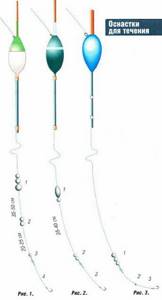
Rice. 1. For weak and medium currents (main option): 1 - main load: 2 - additional load; 3 - sub-lead 0.08-0.15 g: 4 - leash 20-25 cm.
Rice. 2. For a very strong current: 1 - main load: 2 - supplementary weight 0.2-0.5 g. 3 - leash 20-40 cm.
Rice. 3. For wire fishing: 1 - main load; 2 - sub-lead 0.1-0.3 g: 3 - leash 25-40 cm.
The distribution of sinkers on the rig varies depending on the fishing conditions. The load can be from evenly distributed along the entire length of the fishing line to concentrated at one point - in front of the leash. The greater the distance the weight of the load is distributed, the more naturally the rig moves in the water flow and the fewer kinks in the line from the float to the hook, which greatly increases the sensitivity of the rig. But such equipment has a significant drawback - it is prone to frequent tangling, so in practice it makes sense to install sinkers in three to five places. one of them serves as a shepherd.
The weight of the sinkers should increase from bottom to top, starting from the hook. This equipment is universal and has good performance characteristics (Fig. 1).
In some cases, for example, when fishing in a very strong current or with a tight hold, you can concentrate the load in one place, 40-80 cm from the hook, and install a heavy feeder weighing 0.2-0.5 g in front of the leash (Fig. 2 ). It is only important that the length of the leash (20-40 cm) be less than the distance between the underline and the main sinker; this will save you from overlapping the hook and line above the main sinker.
COMPOSITION OF BAIT FOR FISHING IN CURRENTS
In addition to the main basic components of bait, during currents you almost always need ballast - soil, which performs three functions.
Firstly, the weighting of the bait is necessary so that it reaches the bottom faster and does not get carried away by the current.
Secondly, a change in the physical properties of the bait: clay makes the bait heavier and additionally glues it together; loam (ordinary soil) makes it heavier, and depending on the concentration of sand in it, either slightly sticks it together or loosens it.
Fine (3-5 mm) gravel will help to radically make the bait heavier, almost without changing the speed of its erosion. It is not recommended to use clean sand, since when the balls at the bottom are washed out, it remains in place, gradually covering the bait. The bream, of course, is able to dig up a pile of sand to get to the food, but in this case the meaning of the action of the bait is lost, since the fish will quickly eat the offered treat. And for roach, the bait lying on the bottom ceases to exist, since it is primarily interested in particles floating with the flow and marking the feeding path.
Soil is not required when feeding with a mixture of steamed grains of wheat, city, pearl barley, hemp, etc., but such bait is still more typical for fishing with reel gear, and is rarely used in fishing with a fly rod. As for any fishing , it is highly desirable to include at least a small amount of animal components in the bait - bloodworms (small or large), maggots or cut worms. If there are few of them, you can use animal supplements, but only in the supplementary part of the bait.
FEEDING WITH THE CURRENT
There are two main feeding schemes when fishing with a fly rod.
The first option - feeding along the line of the equipment's passage - is more often used on a fairly flat bottom. Balls are thrown like this. so that the main part of the bait is opposite or slightly downstream from the angler; It is from this point that it is possible to control the gear with minimal drift towards the shore. The rest, a smaller part of the bait, is thrown along the line of movement of the equipment, taking into account its braking and displacement towards the shore. In this way, we attract some of the fish to the main bait, and some may be a little further away. This scheme works especially well when fishing for roach, silver bream and chub, which love floating food particles.
Another option is that all the bait is localized at one point. You need to cast it so that the main part falls a little lower downstream, then guiding along this point will be most effective, with a decent distance from the shore. This option is especially good when fishing for bream or crucian carp, when you need to strongly slow down the tackle at the fishing point, provoking a bite. Of course, such a scheme does not cancel free-floating fishing, which is used periodically to check the presence of fish downstream, where biting by roach and silver bream is quite possible.
When casting bait, it is extremely important not to add it slightly. If in still water this is required by the bottom topography, which allows the balls of bait to roll a little (which must be taken into account), then in the current - holding on to the tackle while retrieving it, when it moves to the shore in a certain arc under the influence of a fishing line stretched by the fishing rod. In practice, test runs monitor the degree of approach of the float to the shore, the speed of the current, the required braking force, the presence of hooks, etc. It is along this line, but upstream (taking into account drift), that the feeding point is marked. Usually the degree of lead is 1 -1.5 m to the fishing point. You can, of course, do it simpler: after feeding, look for fish in the fishing place, but in this case there is no guarantee that it will be at a point convenient for fishing. For example, if the main part of the bait lies near a stone, then the equipment will constantly cling to it. The starting part of the bait is about half of the total amount, the rest is required for supplementary feeding.
One of the most important points when fishing is to maintain the fish’s interest in the fishing point by supplementary feeding. With a small amount of food, the fish loses interest and leaves. It can be delayed for a relatively long time without bait only by exceptional bottom topography or the presence of shelter, such as snags. Therefore, constant supplementation is necessary.
The supplementary feeding scheme is close to catching large bottom-dwelling fish in still water: bream, ide or river kras. Additional feeding should be done quite rarely so as not to constantly disturb the fish, but in solid portions - three to five balls of bait the size of an orange. Since the supplementary feeding and starting balls are the same in size, the feeding point is determined simply - by a landmark on the opposite bank. This allows you to clearly control the fishing point at all times.
Constant feeding with small portions of bait (about the size of a table tennis ball) is primarily required for catching roach and silver bream. Lumps are thrown in one or two every 5-10 minutes. Thus, the fish are not disturbed by constant bait, but their interest is maintained as much as possible.
The correct rate of feeding is monitored by the reaction of the fish: if the quantity and quality of bites improve, large fish are caught, which means that the fisherman’s actions are absolutely correct. Of course, the total amount of both bait and supplementary feeding depends on the number of fish in the fishing area. If there is a lot of it, then the risk of overfeeding the fish is minimal, and if it is not enough, it is necessary to reduce the amount of bait, otherwise the bites will become weak and uncertain, and the fish, having had enough, will not be interested in the bait.
Small lumps of bait behave in water a little differently than large starting balls - they are carried away more and washed away faster by the current, and this must be taken into account. In addition, during the fishing process, the bait dries out a little, and it is necessary to either slightly moisten it with a spray bottle, or make allowances for that. that the bait becomes more active and breaks down faster at the bottom. When fishing for roach and silver bream, active bait helps fishing, but for bream it is absolutely necessary to control the degree of moisture in the bait. To ensure that the bait dries out less on a hot day, if possible, place it in the shade and cover it with a damp towel.
Fishing with a fly rod in the current involves floating the gear at one speed or another over the fishing point. The effectiveness of fishing is affected by the speed of the current and its changes, possible changes in water level, distribution of fish along the feeding line, its activity, etc.
Related articles:
Fishing for pike perch in reservoirs
Fishing for bream on the current
Classic mini swimbait
Catching catfish. channel catfish
Lures
Roach can be classified as an “omnivorous” non-predatory fish, but at different times of the year it prefers different baits. The universal bait for roach is maggot and bloodworm, but river and Californian worms can also provide a decent catch. Roach can be successfully caught using a float on:
- maggots;
- worms (river and California);
- bloodworm;
- burdock;
- caddisfly;
- bakery products;
- boiled grain tips;
- artificial nozzles.
Lure
Without tempting bait, catching roach on a float is not the most interesting activity, because the fish will bite very reluctantly. But correctly selected bait attracts, including large roach, to the fishing site, and it actively bites, losing its vigilance. There are quite a few different baits for roaches in stores and there is plenty to choose from.
The main thing is that the bait is without a strong odor, dark in color and does not alarm the fish with an unusual shade for it. Some fishermen prefer to make bait for roach with their own hands, and this is by no means a matter of wanting to save money. When you make bait with your own hands, you have confidence in the quality of the ingredients used, especially since their cost is not that high. For homemade bait for roach you will need:
- corn and wheat flour;
- cereals;
- cake;
- ground biscuits;
- breadcrumbs;
- semolina.
Semolina is needed for stickiness, the remaining components are ground in an electric meat grinder. Before fishing, the bait is mixed with water from the reservoir, and balls with a diameter of 40-50 mm are formed. Preliminary feeding consists of 10-15 balls in still water and 15-20 in the current. Next, the balls are tossed as the fish bite subsides, 3-5 pieces at a time.
How to choose a fly rod
A fly rod has a number of basic performance characteristics and parameters that seriously affect fishing. Based on these values, the fisherman selects the optimal gear values for certain fishing conditions, based on the distance of bait supply and the size of the expected trophy in the catch. Properly selected gear parameters make fishing with a fly rod comfortable and accurate in casting, as well as reliable when hooking and landing caught fish, which ultimately affects the overall fishing result.
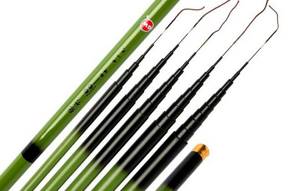
In continuation of the article, we will consider the main operating ranges of parameters and characteristics of fly fishing rods in more detail, paying attention to the values of specific numerical values of the form and the material of its manufacture.
Form length
The float fishing rod for swinging has a fairly wide range in its length parameters. Tackle forms vary in size, ranging from one and a half meters to a length of eleven meters. Based on fishing practice, for the convenience of selecting equipment, experts divided the length ranges into groups, thereby highlighting their main purpose.
Tackle lengths in the range of 1.5-5 meters are most suitable for catching small fish from a floating craft. Such a fishing rod covers the conditions for hunting at a short distance of active fish collected on a bait spot. Lightweight fishing rods provide high-speed fishing with precise delivery of bait to a specific point.
The range size of 5–7 meters is classified as a universal and most common category of fishing rods. With this gear you can safely catch medium-sized fish, up to 3 kg. The fishing rod works ideally in stagnant and weakly flowing reservoirs when fishing both clean and algae-covered water areas.
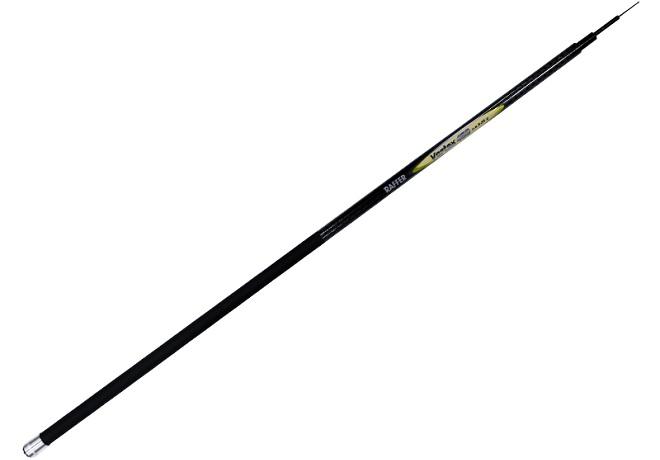
The length of a fishing rod of 7–9 meters is less common and is used in conditions that ensure the production of fish on long casts. Using the gear will require preliminary training in the techniques of using a fishing rod to accurately deliver the bait. Fishing also requires gaining skill. If it is possible to replace the tackle with another type, it is best for a novice fisherman to take advantage of this situation by changing the swing to a more practical bologna in these conditions.
The range of 9–11 meters is considered a purely sporting version of fly tackle, and rods of this length are used only by professionals in specific fishing conditions, which requires both experience and perfect mastery of the tackle, developed through practice.
Test
The blank test determines the permissible weight of the equipment used. As a rule, this is a certain range of values that defines the upper and lower limits of the load, expressed in grams.
Important! In fishing rods used for fly fishing, the test values are necessarily indicated in the markings on the form of the product and upon purchase they are quite easy to find in the form of a record on the butt itself or on the second leg of the telescopic rod.
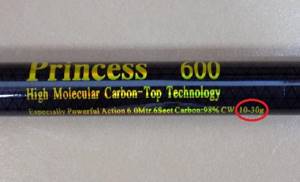
Based on this test, the angler can determine the optimal weight of the equipment, including the weight of the float and the bait used, the use of which eliminates overload, and, consequently, breakage and damage to the fishing rod blank. For this type of equipment, there is an unspoken rule that even the most renowned manufacturers of fishing products adhere to, setting the lower limit of the test to be no less than the number that determines the length of the fishing rod in meters. Accordingly, the lower test of a five-meter whip will not be lower than five grams, and a seven-meter one - seven.
Material of manufacture
First of all, the material of the product affects the weight of the equipment. The smaller the mass of the fishing tool, the more comfortable the fishing and the lower the degree of fatigue of the fisherman. The lightest and best fly rods are made from graphite, but such equipment is very expensive and needs to be treated with care, being fragile and unable to withstand any shock loads.
Graphite tools are used in sport fishing with a professional approach to the art of fishing. A wide range of telescopic fishing rods for amateur fishing are made from fiberglass, carbon fiber and composite alloy. Fiberglass is the cheapest, but at the same time the heaviest material. This tool is recommended for beginner fishermen to gain practice and skill in fishing. Carbon fiber and composite gear are much more expensive than fiberglass, but at the same time they are more flexible and lightweight. For example, a six-meter carbon fiber fishing rod weighs only 250 grams, with a butt diameter not exceeding 4 cm. Fiberglass fishing tackle of the same length weighs at least twice as much and has a base thickness of at least 5 cm.
Build
The structure of fly rods characterizes the degree of flexibility of the tool. Manufacturers produce blanks with fast, semi-fast and medium action. To a lesser extent, you can find a fishing rod with a slow action, in which the entire blank bends during operation.
Important! In the swing, the medium action is considered universal. This fishing rod is suitable for most fishing conditions.
Hard tips are used for catching small fish that need to be quickly hooked, but there is no need to land them at all. It’s easier to catch medium-sized fish, and in most cases large ones, with medium-sized gear. The slow action does not allow for clear detection of medium and small fish, and the specific use of such equipment depends on the type of fish being caught, which must swallow the bait and thus self-identify. A striking example is the perch, which quickly sucks up the bait, but has delicate lips that inexperienced fishermen tear with hard tackle as a result of aggressive hooking and the same fishing.
Fishing tactics
The behavior of roach largely depends on the temperature of the air and water, and therefore the tactics of catching it vary depending on the time of year.
Spring
There are, of course, fans of winter fishing for roach, but the main fishing season begins in the spring, when the water temperature rises to 5-6 degrees and natural food for this fish appears in the reservoir. In such conditions, you need to catch the sorozhka on a float in shallow water, using animal baits such as bloodworms or maggots.
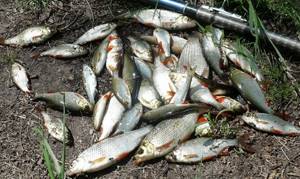
The fisherman should not forget about camouflage, especially when fishing in the coastal zone. You need to feed the fish carefully, throwing 3-5 balls the first time, and then adding 2-3 balls every half hour. If one specimen of a large roach bites, there is a high probability that another will bite, because the roach moves in schools.
Summer
The summer months are not the most promising from the point of view of catching roach on a float. The sun's rays heat the water and the fish hide in the grass or go to holes where it is cooler. In addition, the predator becomes active, and the tracker has to be more careful.
The best time for fishing is early morning and evening dawn. They feed the roach generously, without fear of overfeeding, because at this time the fish is actively feeding. Fishing from a boat is very effective, because you can get close to hard-to-reach places where fish are located.
Autumn
Autumn is the time of preparation of fish for wintering and it is forced to actively feed, fattening up fat. But by mid-October, roach activity decreases significantly, and in November the catches are already very meager.
Fishing is carried out with a minimum amount of bait. Starting feeding is 3-5 balls, and then proceed according to the situation. Animal baits that work are very small in size - one maggot or half a bloodworm on the hook.
Where to catch roach with a fishing rod
For a good catch, you need to know the lifestyle and habitat of roach, and you still have to look for it, since it is very sensitive to weather changes and sometimes stays at a depth near the bottom, sometimes at half-water, and can also stand near the surface. Depending on the season, fishing for roach with a fishing rod can last almost the whole year, except in the dead of winter.
It is very pleasant to catch roach with a float rod in the spring in May, when they gather in large schools before spawning and enter rivers to spawn. During this period in the spring, it actively bites on almost any bait and bait, even without bait. You can catch a large roach with a fishing rod in May, a couple of tens of kilograms per day.
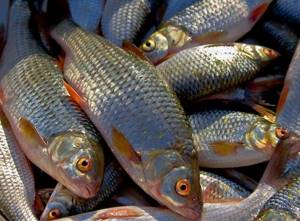
After spawning at the beginning of summer, roaches bite poorly and go into deep places, where you need to look for them. In the summer heat, schools of roaches stand in cold waters at depth, or hide under the shore in the roots of coastal bushes and trees. Among fishermen there are many who like to catch roaches in winter and especially in autumn, when they have gained fat and such dried fish are very tasty. Roach can be caught using a float rod both from the shore and from a boat, depending on the location and depth, sometimes the catch from the shore is greater, since there is less noise than from a boat.
